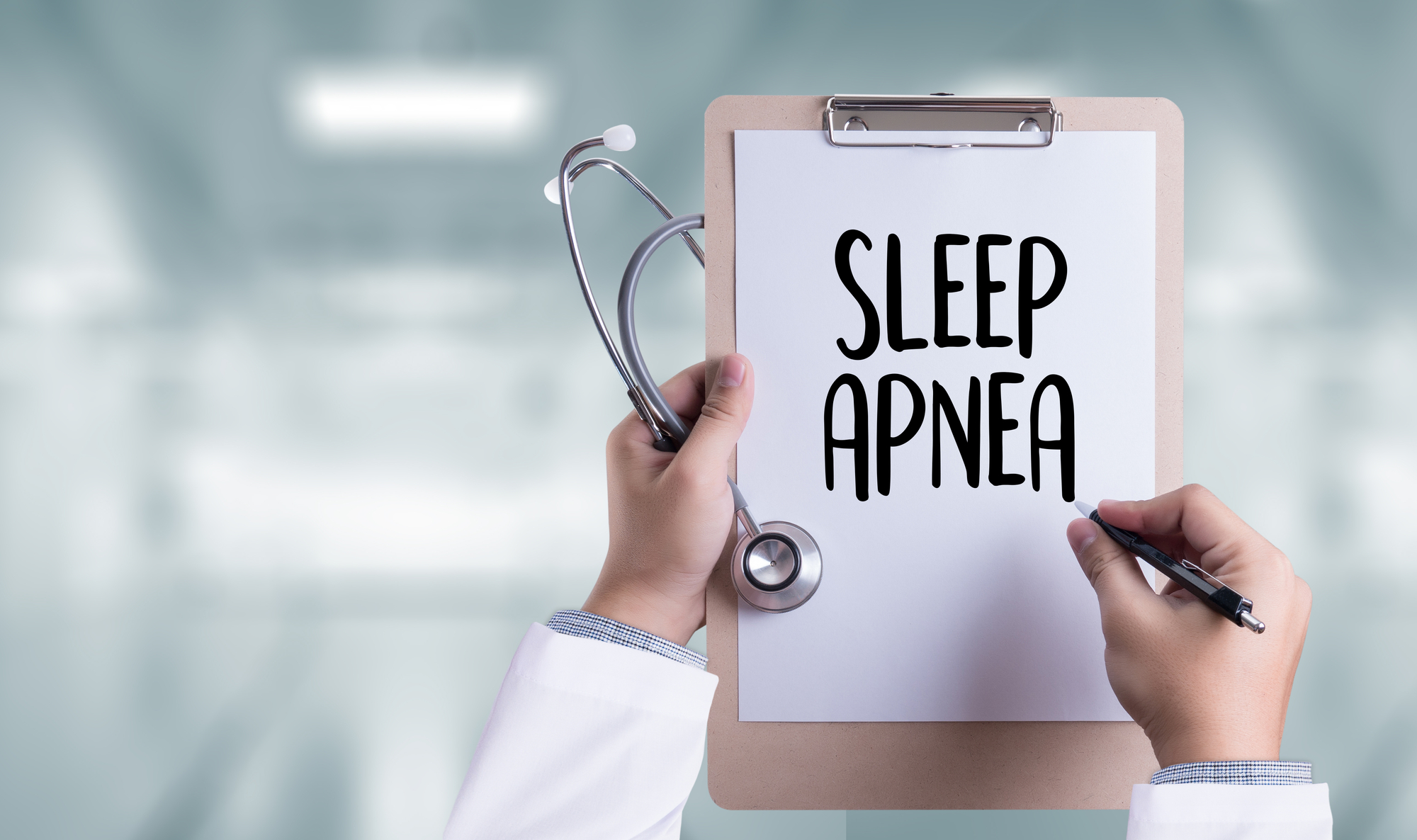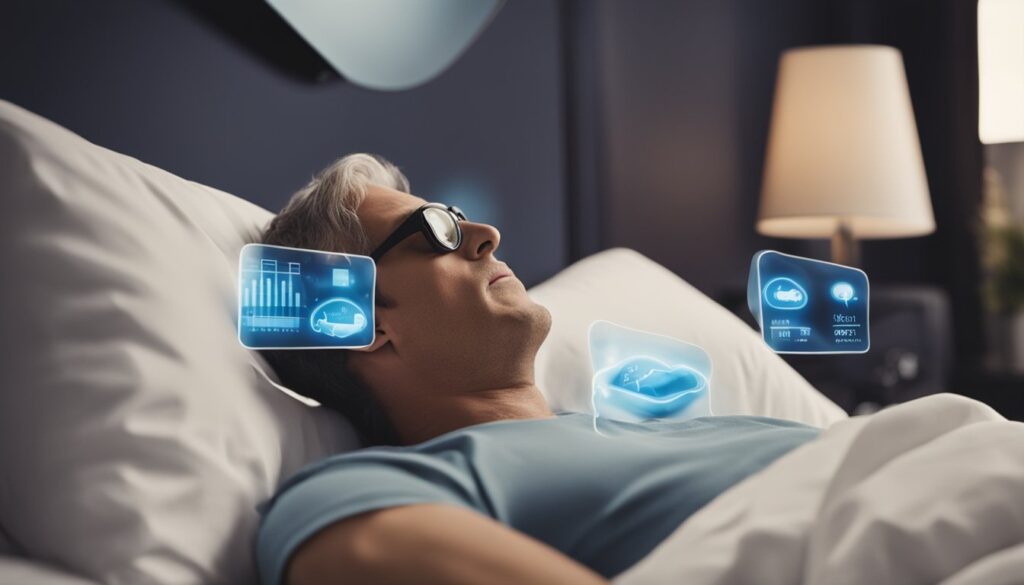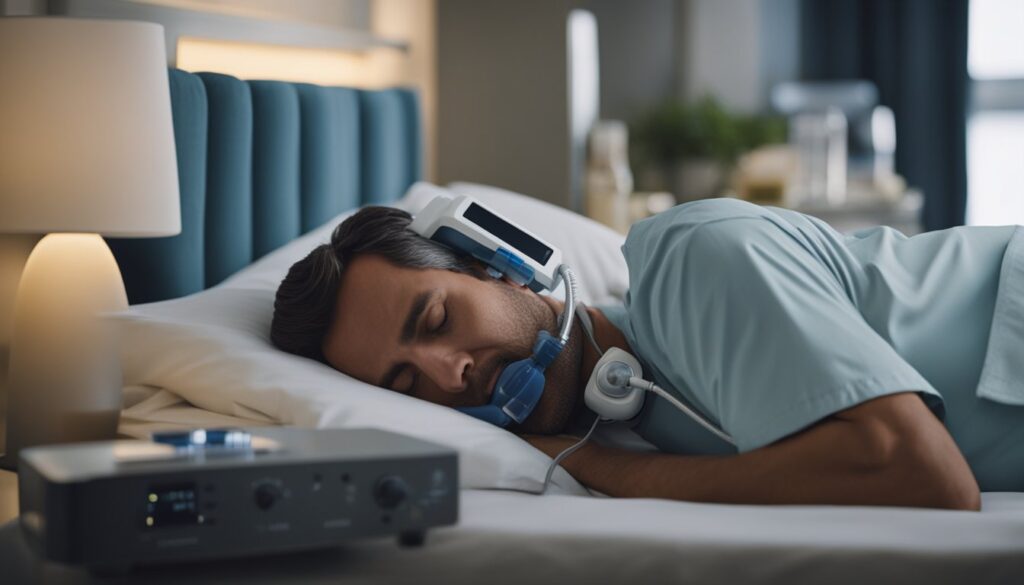
Sleep apnea, a common sleep disorder, has been part of human health for much longer than most people realize. While you might have only started hearing about it recently, it isn’t a modern invention. It’s a chronic condition where your breathing repeatedly stops and starts during sleep. The risks associated with untreated sleep apnea include high blood pressure, heart problems, and type 2 diabetes.
Your awareness of the symptoms can play a critical role in early detection and management. If you experience loud snoring, episodes of breathing cessation noticed by others, awakening with a dry mouth, or excessive daytime fatigue, these could be signs pointing to sleep apnea. Understanding the subtleties between obstructive sleep apnea, the more common form caused by throat muscle relaxation, and central sleep apnea, related to your brain’s inability to properly control breathing muscles, is paramount in seeking the right treatment plan.
Understanding Sleep Apnea

Sleep apnea is a serious condition where your breathing stops and starts repeatedly during sleep. It can lead to significant health issues if left untreated.
Defining Sleep Apnea
Sleep apnea is characterized by repeated breathing pauses during sleep. These pauses, known as apneas, can cause you to gasp for air and may be accompanied by loud snoring. Breathing typically resumes with a loud snort or choking sound. There are three types of sleep apnea: obstructive, central, and complex.
Causes and Risk Factors
The most common form is obstructive sleep apnea (OSA), where the tongue and soft tissues in the throat block the airway. Risk factors include obesity, family history, age, smoking, and alcohol consumption. Men are more likely to have sleep apnea than women, although the risk for women increases after menopause.
Recognizing the Symptoms
Symptoms include loud snoring, awakenings during the night with a sensation of gasping or choking, daytime sleepiness, fatigue, dry mouth upon awakening, and morning headaches. It is crucial to pay attention to these signs, as they can be indicative of sleep apnea.
Diagnosing Sleep Apnea
Your doctor will consider your symptoms and may refer you to a sleep specialist for a sleep study. Diagnosis is confirmed through a sleep study that records your blood oxygen level, heartbeat, breathing, and sleepiness. It involves monitoring you while you sleep, observing apneas and measuring your oxygen levels to determine the severity of the condition.
Treatment Strategies
When managing sleep apnea, it’s crucial to consider various treatment strategies that range from simple lifestyle modifications to advanced medical interventions. Each approach is tailored to meet individual needs and address specific aspects of the condition, such as minimizing the risk of serious health concerns.

Lifestyle Changes and Home Remedies
You can make several adjustments in your daily habits to alleviate symptoms of sleep apnea. Losing weight can significantly reduce airway obstruction, while avoiding alcohol and sedatives may prevent the relaxation of throat muscles that can lead to airway collapse. Sleeping on your side rather than your back can also decrease the frequency of apnea episodes.
- Weight Loss: Aim for a healthy weight to improve airway patency.
- Sleep Position: Alternating your sleep position to prevent airway blockage may be beneficial.
Medical Interventions
In cases where lifestyle changes are insufficient, your doctor might prescribe medical therapies. Continuous positive airway pressure (CPAP) is the most common treatment for moderate to severe obstructive sleep apnea. The CPAP device utilizes a mask to deliver a steady stream of air that keeps your airway open while you sleep. Other options include oral appliances designed to keep your throat open or medication to relieve nasal congestion.
- CPAP Devices: Ensure consistent use as prescribed by your healthcare provider.
- Oral Appliances: Consider this as an alternative if CPAP is not suitable for you.
Advanced Therapies
For those with severe symptoms or who haven’t found relief from other treatments, more advanced options are available. Various surgeries can alter the structure of your airway to improve airflow. Similarly, oxygen therapy might be recommended to ensure sufficient oxygen levels throughout the night. Adaptive servo-ventilation (ASV) is a newer form of ventilation therapy that may help if you have central sleep apnea by adjusting pressure based on your breathing patterns.
- Surgery: Potentially consider as a last resort if other treatments haven’t been effective.
- Oxygen Therapy: Can be combined with CPAP to treat central sleep apnea complications.
Frequently Asked Questions
In this section, we address common inquiries regarding sleep apnea, covering treatment options, advancements in therapy, and the nature of the disorder itself.
What are the primary treatments available for sleep apnea?
For those diagnosed with sleep apnea, a range of treatments are available. Continuous Positive Airway Pressure (CPAP) therapy is widely recognized for its effectiveness. Additionally, lifestyle changes, oral appliances, and surgery are potential options depending on the severity and type of sleep apnea.
How has sleep apnea treatment evolved over the years?
Over the years, sleep apnea treatment has seen significant advancements. From the development of more comfortable and user-friendly CPAP machines to alternative treatments such as hypoglossal nerve stimulation, the field continues to innovate for better patient outcomes.
What impact does CPAP therapy have on the body over time?
Long-term use of CPAP therapy often leads to positive changes in health, including reduced daytime sleepiness, headache relief, and a decrease in associated cardiovascular risks. The impact is particularly noticeable in those with severe symptoms who start CPAP therapy.
What are the differences between obstructive and central sleep apnea?
Obstructive sleep apnea (OSA) occurs when throat muscles relax and block the airway during sleep, while central sleep apnea (CSA) results from the brain not sending proper signals to the muscles controlling breathing. Understanding these differences is crucial for accurate diagnosis and treatment.
At what age range is sleep apnea most commonly diagnosed?
Sleep apnea can be diagnosed at any age, but it is most commonly diagnosed in middle-aged individuals. Factors like age-related muscle tone changes can increase the risk of sleep apnea in older adults.